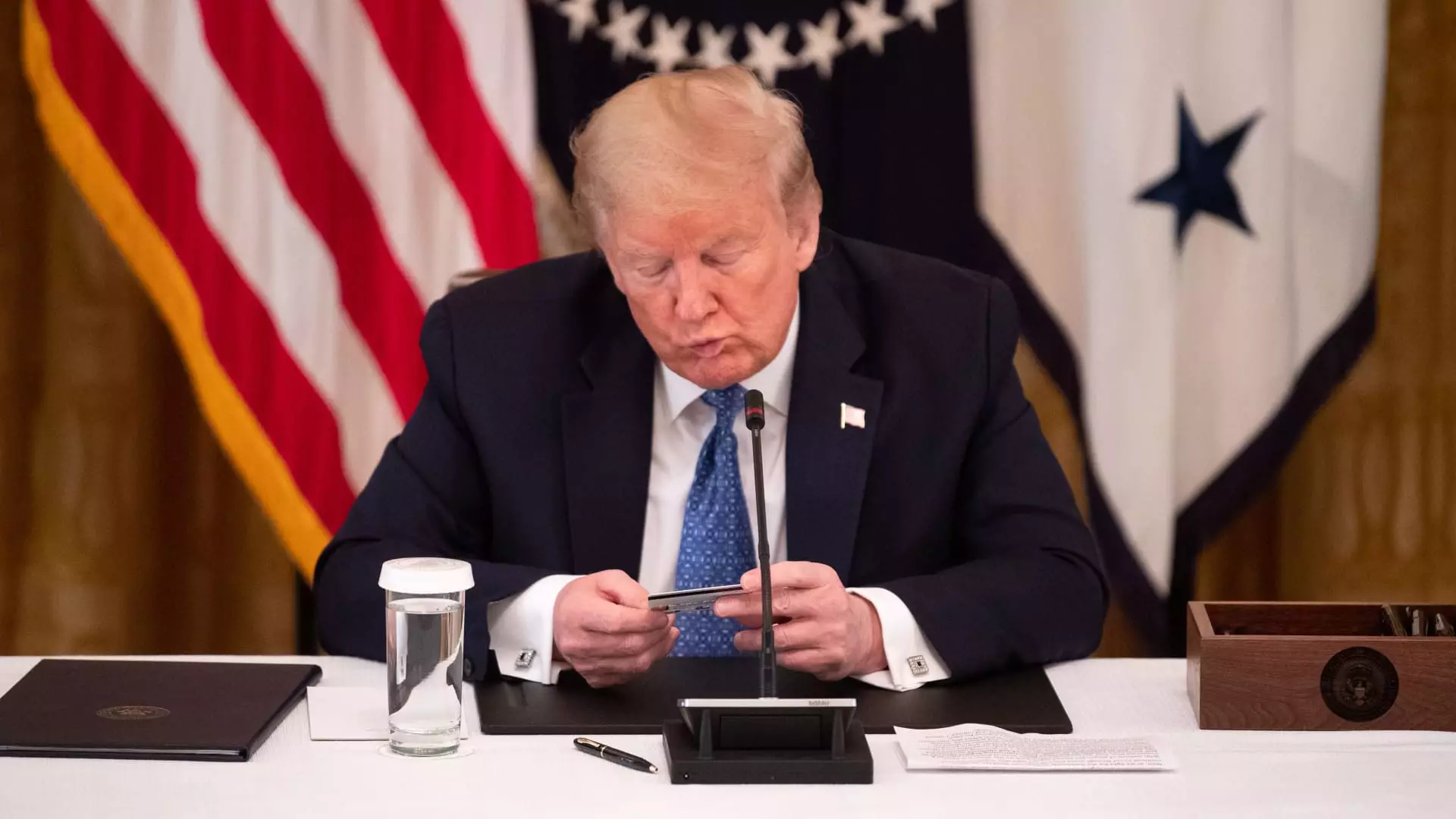In the world of cryptocurrency, where innovation meets speculation, Donald Trump’s entry into the blockchain arena through his project, World Liberty Financial (WLF), has sparked considerable interest and skepticism alike. However, the launch of WLF’s token sale has been marred by technical difficulties and underwhelming performance, prompting a reevaluation of its prospects in the chaotic crypto market.
WLF’s token sale kicked off amid high expectations, fueled by a claim from co-founder Zachary Folkman that more than 100,000 investors were primed to participate. Yet, the reality of its launch left much to be desired. Throughout the opening hours, the website experienced frequent outages, frustrating potential buyers and limiting their ability to make purchases. This scenario unfolded on a day that should have been a celebratory launch but instead was met with repeated calls to maintenance pages. Only approximately 4,300 unique wallet addresses have reportedly adopted the token, a stark contrast to the 100,000 registrants. Such numbers indicate that the technical issues significantly hampered user access, substantially affecting the project’s initial momentum.
WLF’s assertion that it has sold over 532 million tokens at 15 cents each may seem impressive on the surface, but in the grand scheme of its 20 billion token offering, this represents a mere fraction of total inventory—less than 3%. This sluggish uptake raises questions about investor confidence and interest levels, especially amid a significant upcoming political event—the presidential election, during which Trump’s viability as a candidate is already under scrutiny.
One of the more concerning aspects of the WLF initiative is the vagueness surrounding its intentions. Although there is buzz about it serving as a “crypto bank,” details are scant. The roadmap suggests a massive capital raise of $300 million, accompanied by a lofty valuation of $1.5 billion. However, without a formal white paper or comprehensive business plan made available to the public, one must question the legitimacy and viability of such claims. Critics might argue that this lack of transparency is a red flag, even for seasoned investors, as robust documentation is typically a hallmark of earnest crypto endeavors.
Moreover, the regulatory framework WLF aims to adopt—specifically a Regulation D token offering—though legal, imposes strict limitations, allowing only accredited investors to participate. This constriction could hinder the project’s fundraising ambitions since registered investors—those with a net worth exceeding $1 million—are a relatively small pool compared to the broader public. While it is clear that lowering regulatory hurdles may make some investors feel safer, the exclusivity may also negate the widespread community involvement that is often crucial for a crypto project’s vitality.
Zachary Folkman, one of the founders of WLF, previously operated a company named “Date Hotter Girls” and is known for his involvement in another crypto venture, Dough Finance. Such a background raises eyebrows when juxtaposed with the high-profile association of the Trump family with WLF. Critics might question whether Folkman’s previous business experience within the tech and crypto sectors genuinely qualifies him to lead a significant financial initiative. The foundational team’s reliance on media exposure rather than substantive expertise could be a significant vulnerability as the venture progresses.
Despite the shortcomings, the project holds potential, chiefly through the promise of voting rights for token holders concerning the soon-to-be-developed WLF platform. But once again, the absence of a substantive foundation and clarity regarding user engagement raises concerns over whether investors will see value for their tokens beyond speculative trading.
The issues plaguing WLF echo a pattern seen in various Trump-related business projects, where ambition often eclipses practical execution. On the same day as WLF’s tumultuous launch, shares of the Trump Media & Technology Group—a parent company of his social media platform, Truth Social—fell nearly 10%. This tumultuous backdrop adds pressure to the crypto project’s implications for Trump’s political ambitions, especially in a rapidly evolving financial landscape.
World Liberty Financial’s launch has been riddled with technical glitches and operational ambiguities, resulting in curiosity and skepticism among potential investors. While the concept of a Trump-associated cryptocurrency may seem appealing on paper, the execution thus far suggests a rocky path ahead. Without clear communication, a transparent strategy, and a demonstrable track record, WLF may struggle to carve its niche in the ever-competitive crypto sector. As the election draws nearer, all eyes will remain on whether WLF can address its shortcomings or risk being overshadowed by the complexities of Trump’s multifaceted business endeavors.

